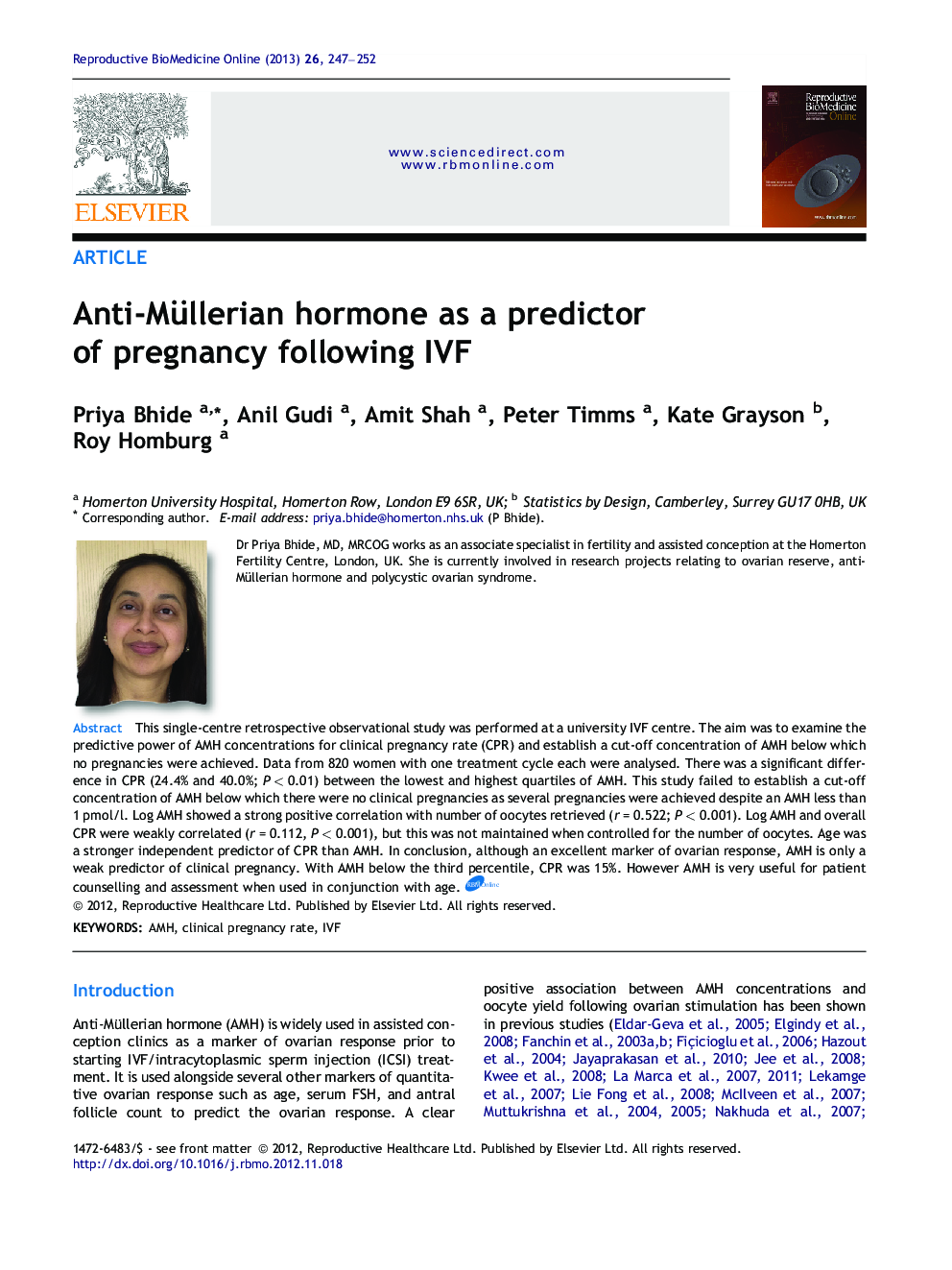| Article ID | Journal | Published Year | Pages | File Type |
|---|---|---|---|---|
| 3970663 | Reproductive BioMedicine Online | 2013 | 6 Pages |
This single-centre retrospective observational study was performed at a university IVF centre. The aim was to examine the predictive power of AMH concentrations for clinical pregnancy rate (CPR) and establish a cut-off concentration of AMH below which no pregnancies were achieved. Data from 820 women with one treatment cycle each were analysed. There was a significant difference in CPR (24.4% and 40.0%; P < 0.01) between the lowest and highest quartiles of AMH. This study failed to establish a cut-off concentration of AMH below which there were no clinical pregnancies as several pregnancies were achieved despite an AMH less than 1 pmol/l. Log AMH showed a strong positive correlation with number of oocytes retrieved (r = 0.522; P < 0.001). Log AMH and overall CPR were weakly correlated (r = 0.112, P < 0.001), but this was not maintained when controlled for the number of oocytes. Age was a stronger independent predictor of CPR than AMH. In conclusion, although an excellent marker of ovarian response, AMH is only a weak predictor of clinical pregnancy. With AMH below the third percentile, CPR was 15%. However AMH is very useful for patient counselling and assessment when used in conjunction with age.Anti-Müllerian hormone (AMH) is a hormone produced by the ovary and reflects the egg reserve. The aim of this study was to examine the ability of AMH levels to predict pregnancy following IVF treatment and to establish a cut-off concentration of AMH below which no pregnancies were achieved. This retrospective study was carried out at a university IVF centre. It included 820 women who underwent IVF treatment in 1 year. The study showed that there was a strong positive correlation seen between AMH and the number of eggs obtained during IVF treatment. There was a significant difference in pregnancy rates (24.4% and 40%) between the lowest and highest quartiles of AMH. This was not maintained when controlled for the number of oocytes. This shows, that although an excellent marker of the number of eggs retrieved at IVF, AMH is only a weak predictor of clinical pregnancy. Age was a stronger independent predictor of pregnancy than AMH. With AMH below the third percentile, clinical pregnancy rates were still 15%. However, AMH is very useful for patient counselling and assessment when used in conjunction with age. We failed to establish a cut-off concentration of AMH below which there were no clinical pregnancies as several pregnancies were achieved despite having AMH concentrations less than 1 pmol/l.
